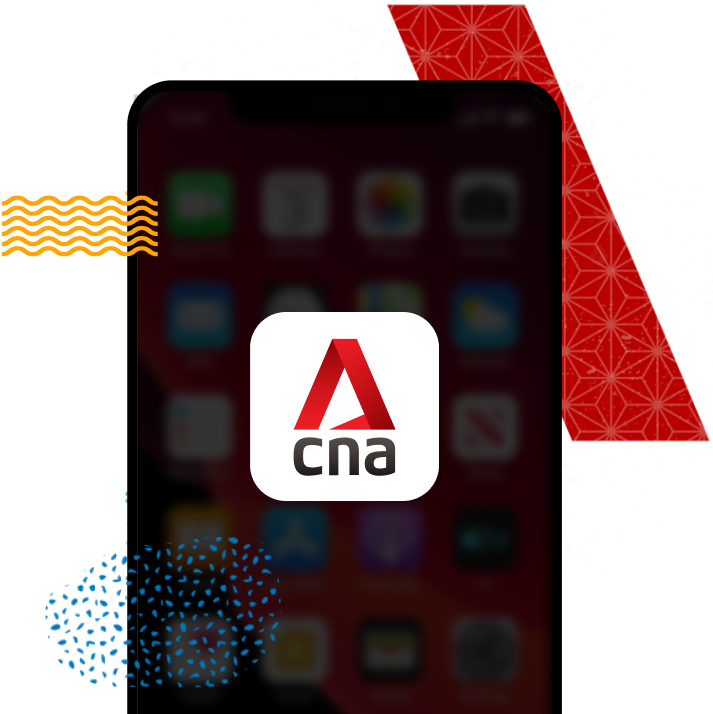Healing invisible wounds: How 2 young Singaporeans found hope and support after traumatic bodily injuries

Ms Clarissa Foong (left) and Mr Marius Madsen (right) received medical treatment at the National University Hospital after they suffered blunt-force physical injuries. (Photos: Clarissa Foong, Marius Madsen)
SINGAPORE — In 2022, a devastating road accident took the life of Clarissa Foong’s close friend whom she had known since secondary school.
Ms Foong, who was riding pillion on a motorcycle at the time, was severely injured and suffered head trauma, memory loss, bone fractures and organ injuries.
Two years on, the 25-year-old still has some mild cognitive and memory problems.
Similarly, 18-year-old Marius Madsen faced his own life-altering trauma after a fall from height left him wheelchair-bound. He was 14 at the time.
For both survivors, physical recovery is only one part of their healing journey. Dealing with the invisible emotional wounds has been a lot harder.
As they rebuild their lives, Ms Foong and Mr Madsen have found a safe space with a trauma survivor support group, where they connect with people who understand their struggles.
Started by the National University Centre for Trauma last year, the group is Singapore’s first support group for survivors of traumatic bodily injuries, catering to patients who are or were from the National University Hospital (NUH).
It now has 14 members aged 18 to 63.
The National University Centre for Trauma was officially launched in July to provide holistic trauma care for adults and children with severe or life-threatening injuries, and to boost safety awareness among vulnerable groups.
WHY IT IS CRITICAL TO HEAL EMOTIONAL WOUNDS
After surviving the traffic accident, Ms Foong felt isolated even with the support of family and friends.
“Some of my friends would visit me, but there was always a feeling of distance, like they didn’t fully know what I was going through.
“When I met other survivors in the trauma support group, I felt less alone, even though we don’t suffer from the same kind of physical injuries,” she said.
Ms Lim Suat Ting, senior coordinator at NUH’s department of surgery, explained that many patients whose bodies have gone through physical trauma struggle with similar emotional battles of isolation after being discharged from the hospital.
“Recognising the absence of a national support group, we were motivated to create a community where survivors can connect, share and heal together.
“Our goal is to help them build friendships, regain confidence and rebuild their lives,” she said.
Mr Mitchell Yeo, a senior medical social worker at NUH, explained that anxiety and depression are common among trauma survivors.
Those with physical impairments that limit their independence may be particularly vulnerable, because their mood may be affected and if left unchecked, can escalate to depression.
It is important to understand that the psychological effects of physical trauma are not always visible.
Dr Soo Shuenn Chiang, senior consultant at NUH’s department of psychological medicine, said that some people may develop post-traumatic stress disorder (PTSD) after the accident or experience PTSD-like symptoms.
They may have intrusive mental images related to the accident or nightmares and become hypervigilant to sounds or sights related to the accident.
They may also have insomnia, become irritable or avoid thinking or talking about the accident.
For example, someone who was involved in an accident with a red car may find themselves being jumpy whenever a red car passes by or seeing similar events on television, Dr Soo explained.
“For survivors, it can be an isolating experience to go through the symptoms of trauma alone. A support group helps reduce these feelings of isolation and offers opportunities to connect with others as a community,” he said.
Being part of a support group also allows survivors to see and learn how others cope with trauma.
“They pick up new skills and perspectives that help them to better cope with and heal from trauma,” Mr Yeo the medical social worker said.
“It is said that challenges build character and when this is done with others, it promotes tighter bonds and there is a sense of collective growth.
“This empowers each individual to accept their experience as part of who they are and to transform their adversity into strength,” he added.
The group meets twice a year, but there are plans to increase the number of members and these sessions.
LOSING A LONGTIME FRIEND AND HER MEMORY
When Ms Foong woke from her coma after the accident, she found out that she had lost one of her kidneys and the right side of her body was “useless”, unable to move due to severe head trauma, she said of the multiple injuries she had.
She had no recollection of what happened and who was with her at the time of the accident. There were no eyewitnesses or cameras near the accident scene.

Ms Foong, who holds a bachelor’s degree in business marketing, also did not know her own name or how she looked like.
Her father printed photos of her, her family, good friends and pet cats to show her, but she was unable to recognise or recall anyone.
When looking at a photo of herself, she would ask who was that in the picture. When she saw photos of her cats, not realizing that they were her beloved pets, she said, “Aww, they are so cute, I wish I could have them”.
Upon learning that her friend had died, she recalled that a deep sense of grief washed over her, even though she was not able to recall who he was.
“I was sad and felt lost as well,” she told TODAY, holding back tears. “I couldn’t remember anything, but there was a very strong feeling that he was an important person to me.”
The emotional pain and grief hit her harder than the pain from her physical injuries.
“For many months, I was very depressed. I had thoughts like, ‘Why am I still alive?’, ‘What’s next, now I can’t do anything’,” she added.
It took her months to relearn how to walk and regain some of her memory, which returned to her in “bits and pieces”, so she could not make sense of all things in her life because there were still gaping chunks of missing information.
She still has some mild cognitive problems, which slow her down during certain work tasks.

To familiarise herself with the skills she had forgotten and seek employment support, she approached SG Enable, an organisation that focuses on enabling people living with disabilities.
She attended a course and did a short work stint through its help.
Now, she is interning in another company in the marketing industry but admitted that she struggles to keep up with schedules and the pace of work.
“What I used to be able to complete in half an hour, I now may take two hours. Sometimes I still feel annoyed with myself, stuck and alone, like I’m a burden to others.”
Yet, Ms Foong wants other trauma survivors to know that there is hope, if only they are open to support and help.
“When I see people go through a similar experience and they are in a defeated state, a part of me wants to shake them and tell them, ‘You can do it!’,” she said.
“I’m still trying and I can say confidently that I’ve seen improvements. You don’t have to feel alone.”
FROM TAEKWONDO BLACK BELT TO MOVING IN WHEELCHAIR
For teenager Marius Madsen, joining the trauma support group and talking about his traumatic experience was a turning point in his recovery.
Knowing that there are others who understand his pain and fears has made a huge difference in his healing. It gave him a renewed sense of hope after a life-altering spinal cord injury.
At 14, Marius was a first dan (a black-belt rank) in taekwondo. A fall from a height of 12 storeys fractured his pelvis in three parts and left him paralysed waist down.
After undergoing rehabilitation, he has regained control of his quad muscles (in the thighs), but still requires a wheelchair to move around.

Mr Madsen said that he was in a “pretty tough and lonely place” after the fall.
“Everything changed. Physical recovery was one aspect, but mentally, I felt like I was trapped in a situation I couldn’t fully process.
“I struggled very much with my identity — I suddenly questioned everything I knew about myself before the accident,” he said.
Like many trauma survivors, Mr Madsen found the emotional impact more challenging than the physical recovery.
“I dealt with a lot of frustration, fear and anxiety. It felt like people could see my physical injuries, but they couldn’t understand the emotional battles I was going through.”
When his trauma doctor first told him about the support group, Mr Madsen was sceptical. He was not sure if talking about his trauma with strangers would help.
“I didn’t know if I was ready to hear other people’s stories either,” he admitted. “But I figured I had nothing to lose.”
He realised later on that listening to other survivors and sharing his own experience became an important part of healing.
“For trauma survivors, connecting with others who’ve had similar experiences creates a bond that’s hard to explain.
“It’s a safe space where we don’t have to explain everything — we just get it. That understanding is so important for healing.”
He would also notice the same sense of relief on everyone’s faces by the end of each meeting.
It did not matter whether they were in their 20s or 60s, or their family background — all carried the similar emotional weight after trauma.
“At the end of each meeting, you can see that everybody has a weight lifted off them,” he said.
Outside the support-group meetings, the members keep in touch via text messaging chat groups.
‘THERE’S LIFE BEYOND TRAUMA’
The support group has also given the youth the extra push that he needed to achieve his personal goals.
“Being part of the group helped me to realise that there’s life beyond trauma,” Mr Madsen said.


With encouragement from his loved ones and the trauma team at NUH, he has returned to sporting activities, picking up taekwondo again as well as a new sport, archery.
He is now training with the Singapore Disability Sports Council’s developmental programme and aspires to represent Singapore in the Asean Para Games.
The council is the national sports body for people with disabilities. Besides providing avenues for learning sports, it also trains talents to represent Singapore at regional and international competitions, for example, the Asean Para Games. Its success stories include Yip Pin Xiu, Singapore's most decorated Paralympian.
Mr Madsen is raising funds for training and to go for tournaments. To compete in the Para Games, he said that he would have to go for world-ranked tournaments to gain ranking points, but the cost of going for tournaments is high.
This month, he won two gold medals in his first world-ranked Para Taekwondo event at the G2 President’s Cup and Australian Open in Brisbane, Australia.
Today, the youth is an advocate for trauma survivors and hopes to continue to reach out to more survivors in need.
“Leaning on people for support, going to a support group doesn’t mean that you are weak,” he said.
“It just means that you’re strong enough to move forward. I’ve found a new sense of purpose, and I hope others will, too.”
To support Mr Marius Madsen’s training goals, you may contribute at the giving.sg website.







